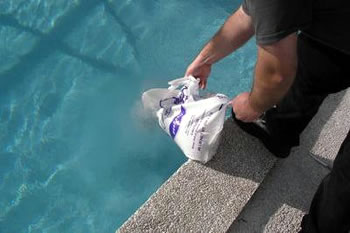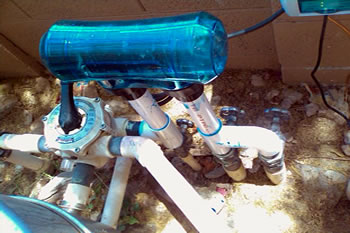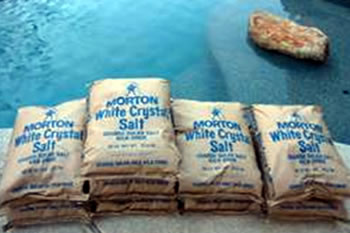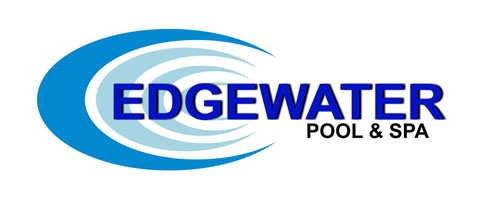Salt Water System Repair
Electrolytic chlorine generation is the easiest and most convenient way to keep your pool water sparkling clean. Table salt ( sodium chloride ) is added to the pool water…less than a teaspoon of salt per gallon of pool water is all that is required.
When it is time for a repair on your salt water system we have the expertise that comes from 20 years of experience troubleshooting and resolving any issues your system may have.
Common Problems:
- Low Chlorine Production
- Calcium Build Up In Generation Cell
- System Calibration Is Incorrect
- Control Box Issues
- Conditioner Levels Out Of Balance
- Cell Not Properly Maintained
- Flow Sensor Malfunctioning



SALTWATER POOL TROUBLESHOOTING GUIDE
Scale? Scale deposits are the most damaging problem in a saltwater pool because they hamper the effectiveness and lifespan of the electrolytic chlorine generator (ECG).
Scale also causes pool finishes to feel rough and appear discolored. Small white flakes coming out of the pool returns or accumulating on the pool bottom can indicate scale forming on the ECG cell plates (this usually occurs when ECG plates reverse polarity). Lower chlorine levels or difficulty maintaining chlorine in the absence of other causes such as heavy rain or high bather load can also indicate that scale on the cell plates is affecting chlorine production.
Most scale deposits can be detected by periodic inspection of the cell, and can be removed from the cell plates with proper regular service. It is recommended to use scale preventatives regularly, and maintain proper water balance to help prevent scale from re-forming.
Avoid using products that contain phosphonates for scale control and bisulfate (dry acid) for lowering pH, because they break down in saltwater pools and actually can contribute to scale formation. Phosphate scales can be particularly tricky because they often are not noticeable upon visual inspection of the cell.
Staining? Stains can be caused by a variety of factors ranging from improper metals used in pool construction to metals in the source water. Staining can even be caused by metals and other inorganic contaminants in the salt itself. Early warning signs for staining include mild streaking down the sides of the pool, or discolored pool surfaces or water.
Stains can usually be treated with products that contain citric, ascorbic or sulfamic acid. Removing dissolved stain-causing metals can usually be accomplished with sequestering agents and filter aids. Maintaining good water balance, and following a program that includes high purity pool salt and stain prevention products, can ward off future stains.
Cloudy Water? When saltwater pools are properly maintained, a quarter can be seen clearly in four feet of water, and features on the pool bottom — even in the deep end — will be sharp and clear to the naked eye. Failure to achieve this level of clarity is typically caused by contaminants in the pool, or by improper or insufficient circulation and filtration.
Organic contaminants — from bather load, run-off from lawn chemicals, yard debris and even rain — will cause pool water to become cloudy if the ECG cannot produce enough chlorine to overcome them. Since the ECG produces chlorine at a fixed rate, it can be difficult to overcome the chlorine demand caused by a large amount of contaminants. Depending upon the magnitude of the demand, multiple manually-added chlorine shocks may be required to solve the problem.
Inorganic contaminants, such as manganese, copper, iron, nitrates, sulfates and calcium, can also affect water clarity, depending on whether they are dissolved or suspended in pool water. Water may become cloudy, or, if metal particles are present, pool water will be discolored. Copper typically causes a green or blue tint, and manganese and iron cause brown and blackish to purple tints, respectively.
Removing metal particles is fairly straightforward: Use a sequestering agent to suspend the metals and a filter aid to collect and remove the particles, and then clean the filter. Removing minerals, such as nitrates, calcium and sulfates, can be done by partially draining the pool and adding fresh water to dilute.
Certainly, watching for these early warning signs — and addressing them with the right kind of treatment — can boost your customers’ satisfaction levels. But proper maintenance is always the best way to avoid problems in saltwater pools.
Improper Salt? A significant contributor to scale, stains, and cloudy water can be the organic and inorganic contaminants in salt itself. Salt is fundamental to a saltwater pool, yet it is often the most obvious and overlooked source of problem-causing contaminants. The chemistry of salt crystals — NaCl, or sodium chloride — is the same for all kinds of pool salt. However, where it comes from and how it was produced affects the levels and types of contaminants that are embedded within the salt crystals.
Mechanically evaporated salt is a great choice for saltwater pools, as it contains fewer contaminants than solar salt and mined rock salt. Always check with your suppliers so that you know exactly where — and how — your salt is made. Your salt supplier should be able to speak to the quality and consistency of the salt source and production process.
Know your maintenance and treatment products. Products designed for traditional pools often contain sulfates or phosphorous-based sequestrants which can contribute to scale in the ECG. Because the ECG contains high pH, temperature and chlorine levels, these products break down and become useless in fighting scale. They also denature into compounds that form additional scale in saltwater pools.
For residential pools, we recommend weekly testing for pH and chlorine, and monthly testing during the season for total alkalinity, calcium hardness, stabilizer/cyanuric acid and metals. We also recommend monthly testing of salinity levels during the season to ensure they are maintained at the right level. Proper maintenance, along with the right salt and treatment products, will help ensure problem-free pools and happy customers.
